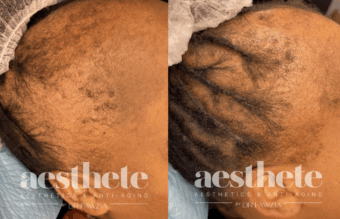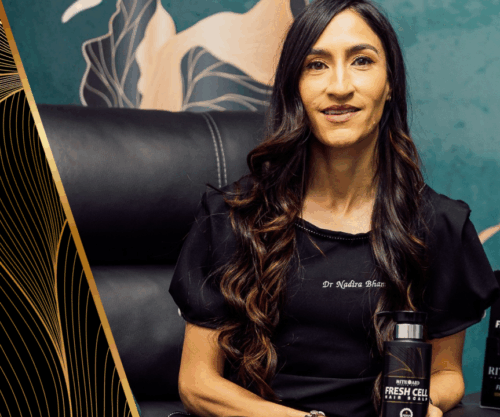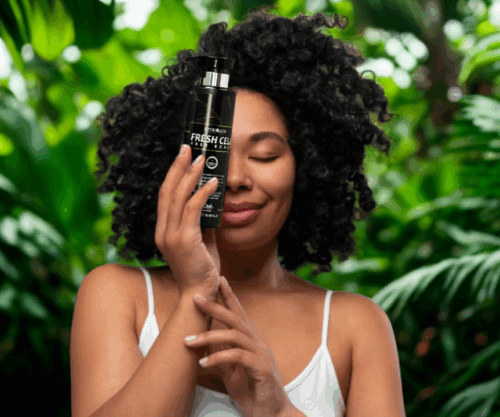
Renowned aesthetic doctor, Dr. Fawzia Salie, founder of Aesthete Medical Aesthetics in Cape Town, has unveiled a comprehensive hair restoration program aimed specifically at treating traction alopecia—a common yet preventable cause of hair loss, especially among women who regularly wear protective hairstyles.
Combining in-clinic Platelet-Rich Plasma (PRP) procedures, topical Human Growth Factor therapy, customised supplementation, and protective style education, the protocol is a groundbreaking approach to reversing hair follicle damage and restoring healthy hair growth cycles.
“With traction alopecia, it’s not just about restoring hair—it’s about restoring the scalp’s natural ability to produce healthy hair long-term. And that starts with understanding how styles, tension, and scalp care all affect follicular health,” says Dr. Fawzia.
Traction Alopecia: A Condition Rooted in Tension and Neglected Scalp Health
-
Styles that are too tight or heavy
-
Long-term wear without scalp cleansing or moisturizing
-
Use of high-alcohol edge control gels
-
Sleeping with gel or leaving styles in past the point of new growth tension

Protective Hairstyles: What to Know & How to Do Them Safely
-
Protective hairstyles are any styles that: Reduce manipulation
-
Keep ends tucked in
-
Limit heat, styling, and breakage
|
Style
|
Pros
|
Risk Factors if Improperly Worn
|
|
Box Braids
|
Long-lasting, low daily manipulation
|
Tension at edges, buildup if left too long
|
|
Cornrows
|
Scalp is accessible, good for wigs/caps
|
Can stress some follicles over time
|
|
Two-strand Twists
|
Gentle, flexible, easy to moisturise
|
Can tangle if left too long
|
|
Wigs (on braids)
|
Convenient, heat-free styling
|
Lace glue, dryness, friction, unwashed braids
|
|
Buns & Updos
|
Elegant, low friction on ends
|
Constant tightness causes thinning at hairline
|
|
Faux Locs
|
Long wear, protective over time
|
Can be too heavy, especially on fine hair
|
Hair Restoration Treatments at Aesthete: PRP (Platelet-Rich Plasma Therapy)
A safe, autologous procedure using the patient’s own blood to concentrate growth factors that stimulate tissue repair and improve follicle function. It enhances circulation, reduces inflammation, and supports natural regrowth.
- Monthly PRP sessions for 4 consecutive months 15–30 minutes per session
- No downtime
- Ideal for active shedding or early-stage thinning
AQ Skin Solutions Advanced Hair Complex+ (Growth Factor Induced Therapy)
Growth factors act as cell regulators, restoring normal function to dormant or damaged cells. AQ’s Hair Complex contains over 150 human growth factor families designed to:
- Normalise cell behavior
- Improve follicle nutrition Strengthen scalp microcirculation
- Restore healthy hair cycles
Supplementation & Lifestyle Support
- Personalised based on bloodwork, hair type, hormonal and nutritional needs
- Supports keratin production, anti-inflammatory balance, and micronutrient replenishment
- Encourages hair cycle normalization and resilience to styling stress
Scalp Health Tips Before, During, and After Protective Styling
Before installation: Clarify with sulfate-free shampoo, deep condition, moisturize
During wear: Clean scalp every 1–2 weeks (especially under wigs), oil or mist with hydrating products After removal:
- Detangle gently
- Let scalp rest for 3–4 weeks
- Use clarifying shampoo to remove buildup Deep condition and trim ends
- Avoid immediate re-braiding
“Think of your scalp like soil—styles are just the temporary surface. If the scalp isn’t healthy, nothing beautiful can grow,” says Dr. Fawzia.
Habits That Damage Hairlines
- Daily use of edge gels with drying alcohols
- Sleeping with gel in hair or not cleansing between reapplications
- Using stiff brushes instead of soft tools (like a toothbrush)
- Wearing tight ponytails or styles back-to-back
- Not rotating between low-tension and structured styles
Look for products with “fatty alcohols” (e.g., cetyl or stearyl alcohol) for hydration, and alternate between gels and softer hair butters or milks.
Understanding Itchy Scalp & Flaking Under Braids or Wigs
Flaking and itchiness can arise from:
- Product buildup
- Dry scalp from poor hydration
- Inflammation from tight styling
- Scalp congestion (e.g., clogged follicles)
Key management tips:
- Cleanse scalp bi-weekly, even under wigs
- Mist or oil scalp lightly every few days
- Use scalp-specific leave-in conditioners
- Consider growth factor therapy to restore follicular function if itching is chronic
Final Word from Dr. Fawzia:
“Traction alopecia is easiest type of alopecia to treat as it results from physical damage to the hair follicle— typically from repeated pulling or tension on the scalp. Unlike other forms of alopecia, which are often caused by internal imbalances in the immune, hormonal, or endocrine systems, traction alopecia isn’t rooted in a systemic problem.
That means we’re not trying to ‘correct the body’—we’re simply restoring the health of follicles that were overworked or stressed. And when we remove the tension and support the scalp with proper treatments, the follicles can bounce back beautifully.
With most other alopecias, we need a whole-body approach—nutritional, hormonal, immune regulation. But with traction alopecia, we’re often able to get real regrowth by treating the root cause directly and giving the scalp what it needs to recover.”
For more information or to book an appointment, visit www.drfawzia.co.za. Alternatively, email info@drfawzia.co.za or call +27 82 314 8294
Also see: Tips for navigating postpartum hair loss




